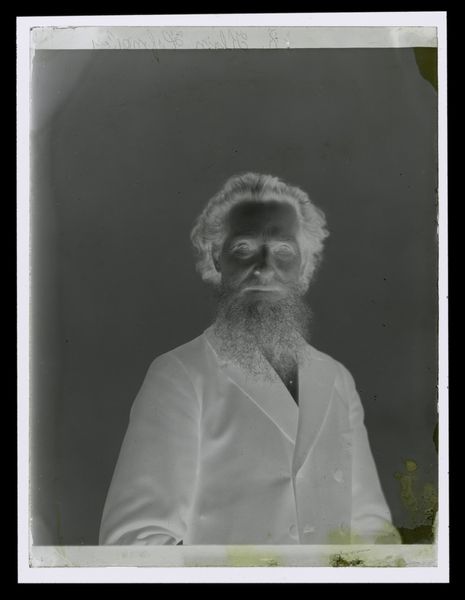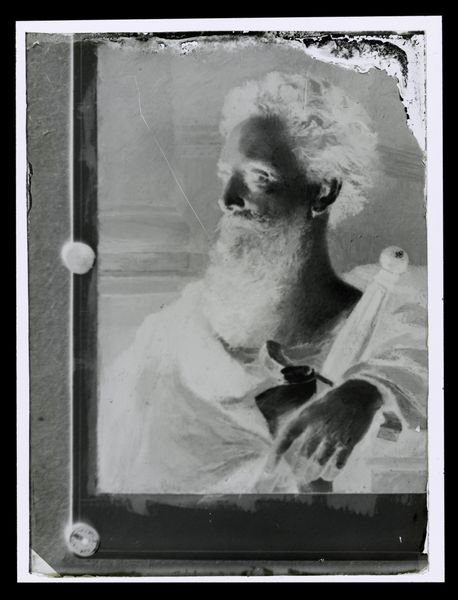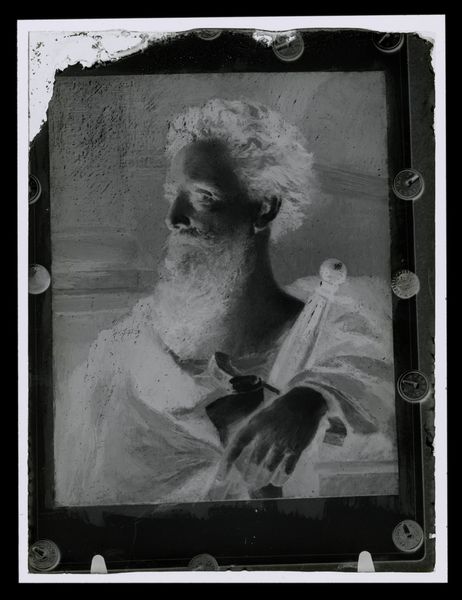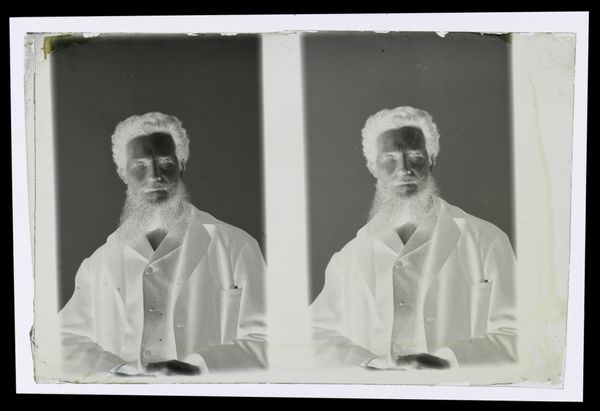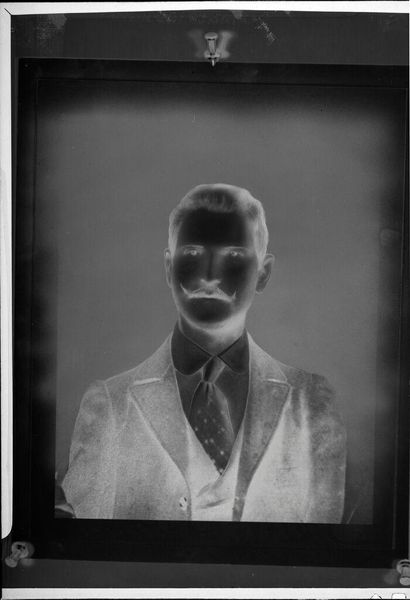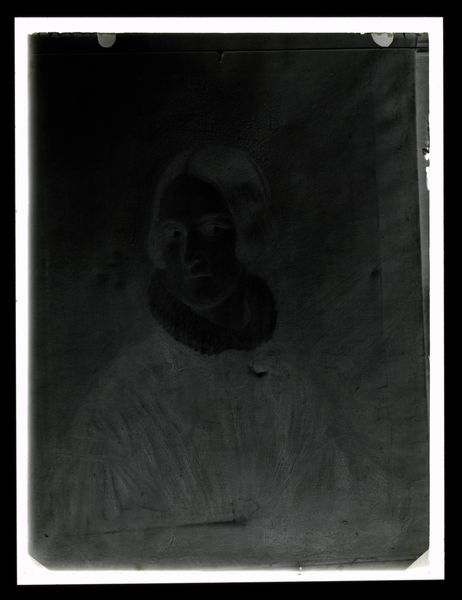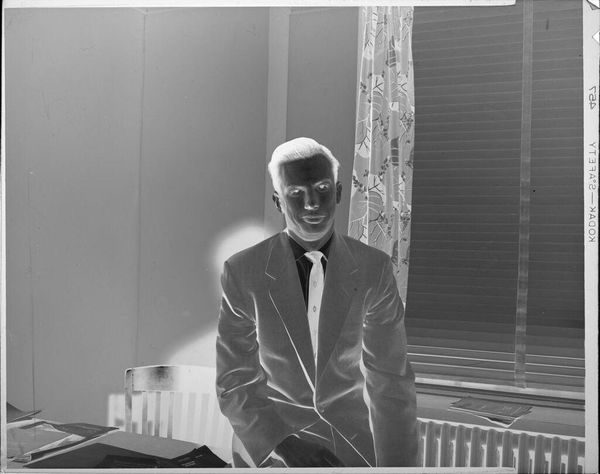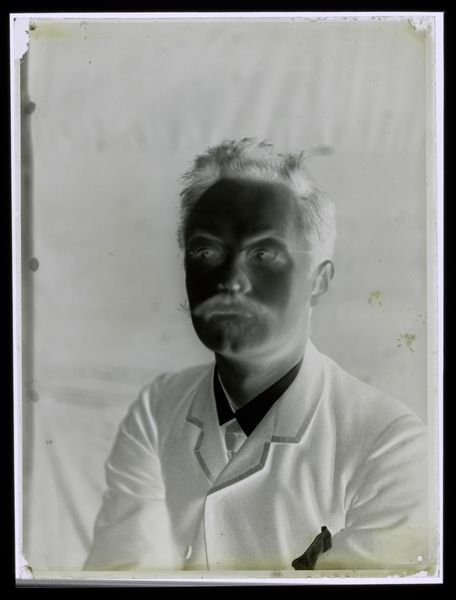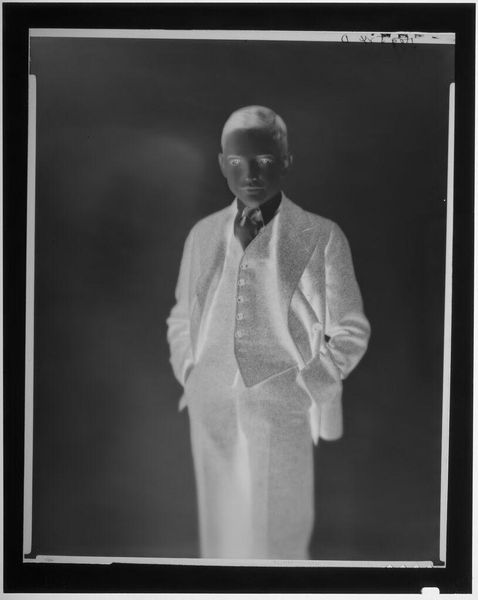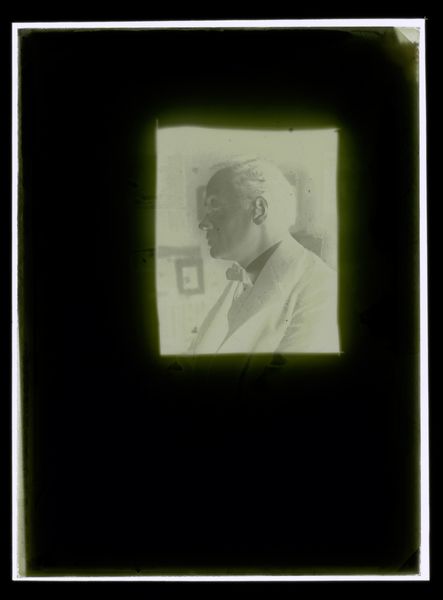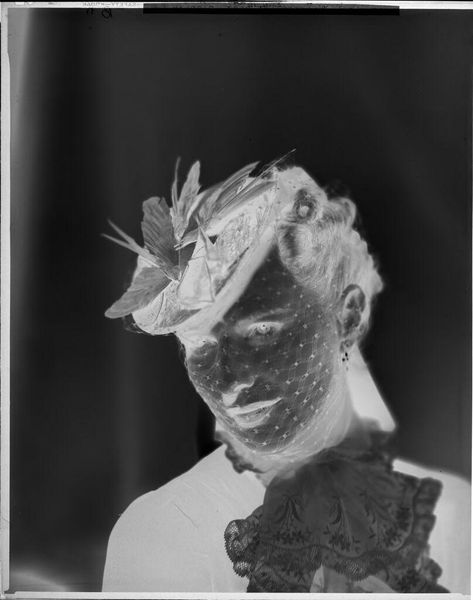
photography, gelatin-silver-print
#
portrait
#
photography
#
gelatin-silver-print
Dimensions: height 118 mm, width 89 mm
Copyright: Rijks Museum: Open Domain
Editor: Here we have Laurens Lodewijk Kleijn’s "Self-Portrait," a gelatin silver print likely created between 1865 and 1900. The stark contrast creates a ghostly and rather unsettling effect. What can you tell me about how the composition contributes to the feeling? Curator: The negative's inversion of light and dark radically alters our perception. Note the subject's face. The eyes are pools of shadow, obscured by a thick beard, challenging classical portrait conventions which valued clarity and idealization. Editor: So, the very technical process affects how we read the image? Curator: Precisely. Look closely at the formal arrangement; the composition emphasizes symmetry, from the central part in his wild hair to the buttoned jacket. Do you notice anything intriguing about this balance? Editor: I do see it, but the brightness makes it seem not quite balanced; it’s as if a light source were positioned slightly beneath, creating the strange glow. Curator: Yes, and how does that skewed illumination alter the emotional tone, shifting it away from stoicism? Editor: It emphasizes the oddness and disrupts any conventional sense of depth. The whole thing appears flattened somehow. Curator: Precisely! The inherent flatness is further accentuated by the medium of photography, disrupting spatial hierarchies traditionally important in painting. Its focus is then drawn toward the surface qualities. A compelling subversion of expectations, wouldn't you say? Editor: Absolutely. Focusing on composition allows us to see how a common format, the portrait, is transformed by a seemingly simple technical approach, giving it an entirely new perspective. Curator: Yes, the stark formal elements offer an intriguing new way to look at even familiar styles.
Comments
No comments
Be the first to comment and join the conversation on the ultimate creative platform.
